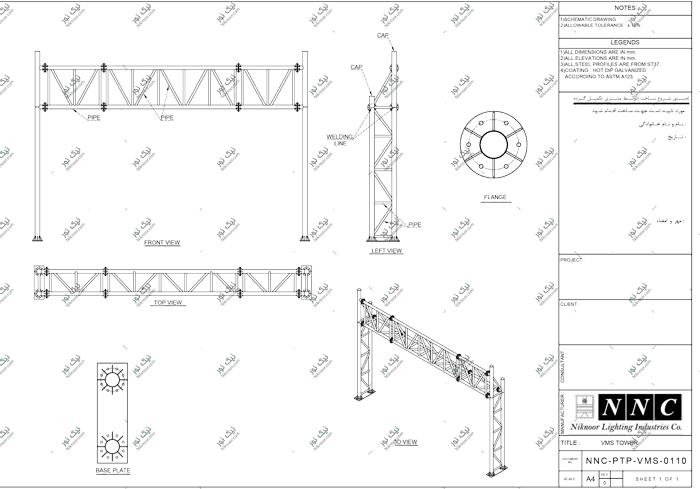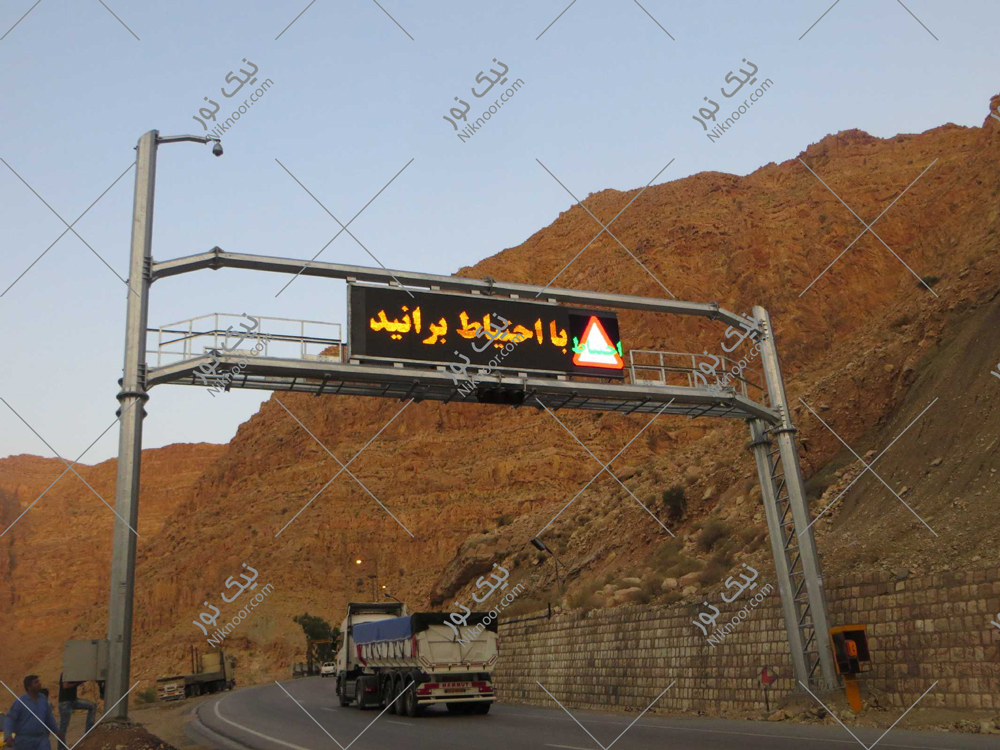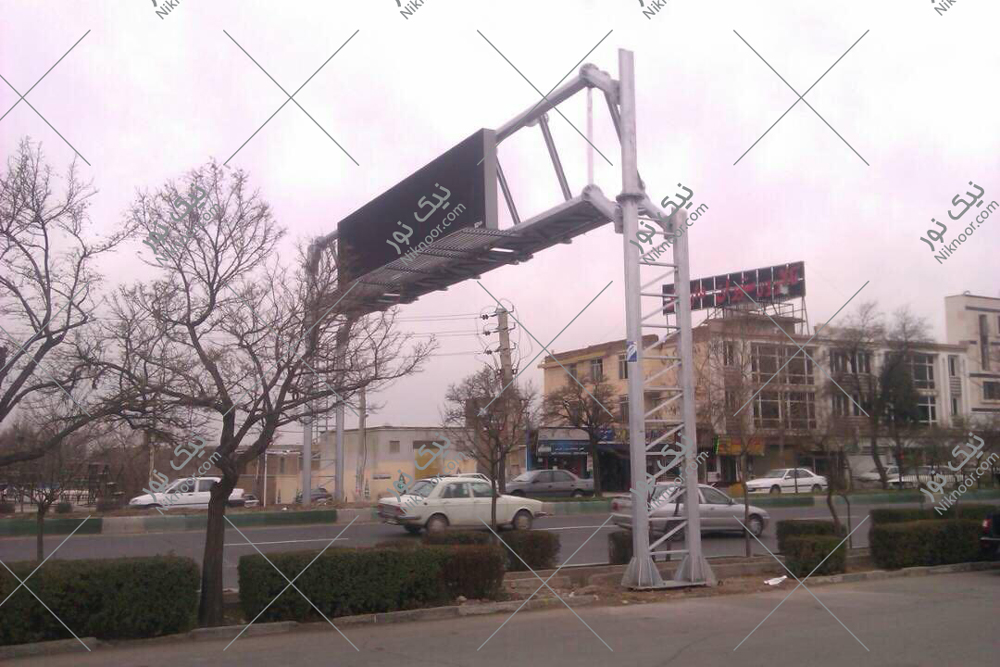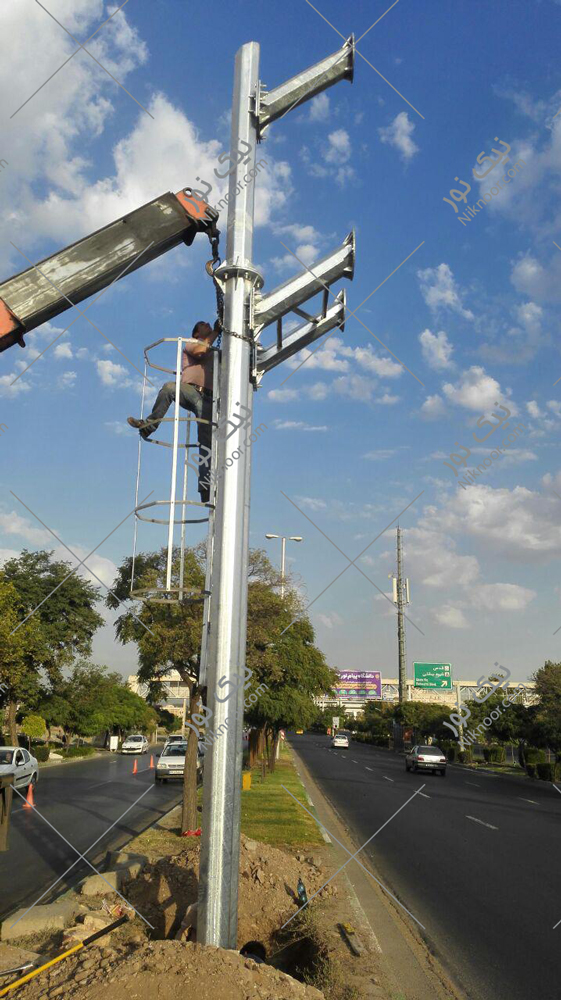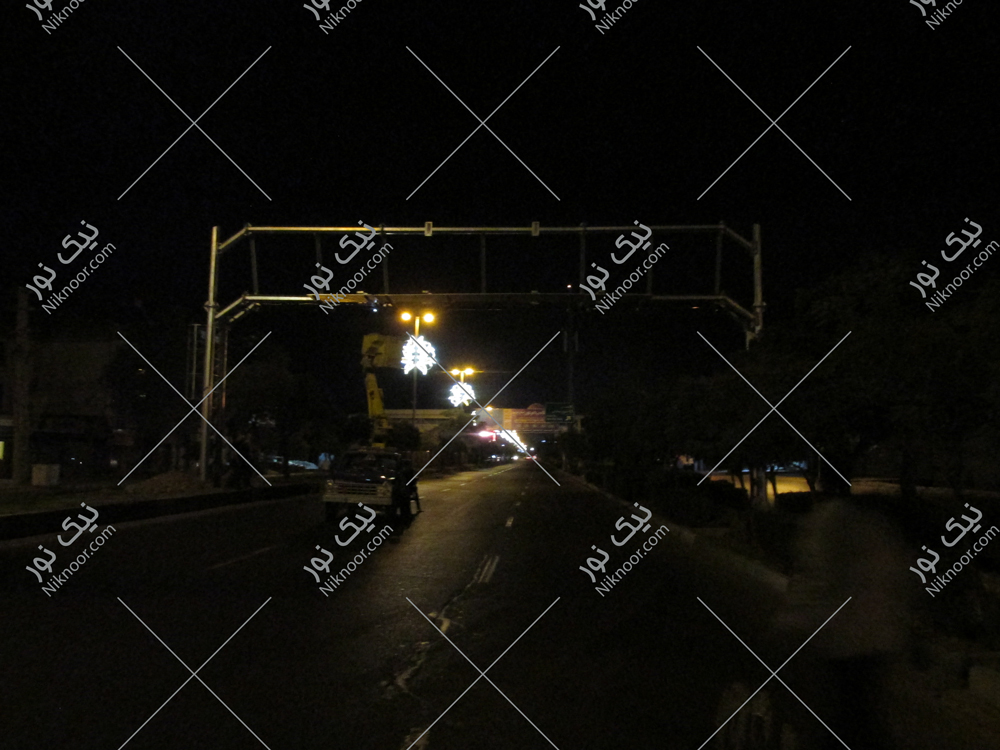VMS Mast
A Variable Message Sign (VMS) is a traffic control device that allows its message to be changed manually, electrically, mechanically, or electromechanically. It is used to display information about traffic congestion, traffic accidents, construction and maintenance work, adverse weather conditions, road conditions, planned events and occasions, and other possible situations or road facilities, such as movable bridges, toll booths, weigh stations, and more.
Variable Message Signs, commonly referred to as VMS, are traffic control devices used for real-time driver information. They are installed in various configurations, including gateway-style, on VMS masts along road shoulders, or as cantilevered structures over roadways. The messages on these signs are generally displayed in real-time, with information controlled and transmitted from a central system or locally. VMS systems are designed to influence driving behavior and improve traffic flow and operations.
VMS Mast Drawing

VMS Sign
Applications of VMS Towers and Structures:
- Enclosing roadways
- Announcing traffic status of routes, including:
- Announcing suitable speed to optimize travel time
- Announcing the status of traffic lanes
- Suggesting alternative routes
- Announcing necessary warnings
- Announcing road repair status
- Incident location
- Type of incident
- Quality of the incident
- Parking locations and the available capacity of each
- Bus station signs to display routes, bus arrival times, and capacities
- Airport signs to indicate flights, gates, and aircraft arrival times
- Advertising signs with moving and graphic images in stores and public spaces
- Cinema signs for announcing films, their showtimes and dates, locations, and related information
- Libraries and shops for announcing working hours on different days
- Score display boards in halls and stadiums for sports-related uses
- Exclusive lane designation
- Changing traffic lane directions at different times of the day
- Traffic management and rerouting as needed
- Informing drivers about highway traffic conditions and simultaneous incidents
- Changing highway routes
- Informing drivers about specific incidents
- Speed control
- Warning about hazardous conditions
- Hazardous and temporary environmental conditions such as fog, chemical vapor emissions, precipitation, dust, storms, winds, etc.
- Dangerous road surface conditions such as icing, slipperiness, flooding, etc.
- Presence of trucks carrying heavy loads
- Controlling crossings
- Controlling overpasses and underpasses
- Controlling safe crossing heights
- Controlling important stations
- Controlling toll stations
- Messaging from construction, maintenance, and repair sections
- Speed changes
- Route control
- Using special passing lanes to control roadways
Giving priority to vehicles with first-level importance in planned programming.
VMS Mast Blueprint Archive
Specifications of VMS Tower: | |
|---|---|
Height | Typically ranges from 6 to 8 meters |
Body Structure | Polygonal |
Coating | Hot-dip galvanized |
Assembly | Special bolts and nuts |
Share this page


